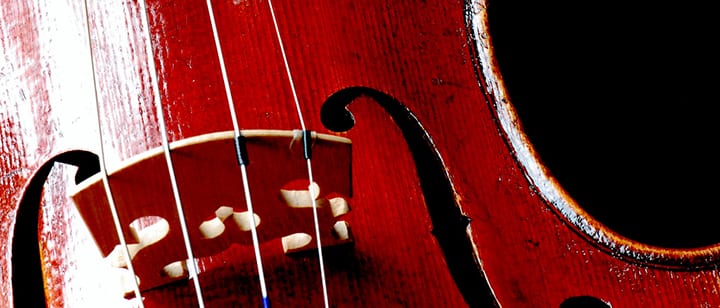 There’s one important – and slightly intimidating – hurdle that all violin students have in common. Whether you’re a complete beginner looking to make a cheap, factory-made instrument more grateful to play, or a more advanced student wanting to customize your “forever” instrument to suit you and you alone, the basic knowledge of how to set up a violin is worth grasping even if your interest doesn’t extend much beyond curiosity and a love of tinkering with things.
There’s one important – and slightly intimidating – hurdle that all violin students have in common. Whether you’re a complete beginner looking to make a cheap, factory-made instrument more grateful to play, or a more advanced student wanting to customize your “forever” instrument to suit you and you alone, the basic knowledge of how to set up a violin is worth grasping even if your interest doesn’t extend much beyond curiosity and a love of tinkering with things.
As you’re probably aware, the bridge is a major factor in determining the sound of your instrument, and learning how to set up a violin bridge is a worthwhile nugget of knowledge to acquire, as they have a habit of collapsing at inopportune moments — like just before an exam or recital, when you don’t have a chance of getting to the repair shop.
How does the bridge affect my violin’s sound?
Assuming the sound post is properly in place, your bridge will allow the strings to resonate properly, but only if it’s the correct height. Many factory-supplied bridges are not entirely fit for purpose, and either sit too high, or aren’t curved to fit comfortably to the body of your violin. If the bridge is too high, it will require additional pressure on the strings to make a sound, and if you’re younger or less strong, this can be extremely frustrating. The bridge should be safely held in place by the pressure of the string — never resort to glue, no matter how tempting. The excellent YouTube tutorial below, from Karacha.com, will give you a step-by-step guide for setting up your bridge on a new instrument that has been shipped “bridge down”, i.e. without the bridge in place, to keep the instrument safe during transit.
Can I really do this on my own, or should I get my teacher to do it?
If you’re not confident, or you suspect that adjustments are needed that are beyond your capabilities — such as the height of the bridge needing adjustment, or there being inadequate curvature to make it secure — seek your teacher’s advice, or go to a good violin maker or repairer for assistance. However, if everything is otherwise as it should be, it’s a worthwhile skill to acquire yourself. Bridges have a habit of falling over when you least expect — particularly when you are changing strings or re-tuning. This YouTube tutorial on how to set up a violin bridge after it has collapsed is handy to bookmark for reassurance when you hear that alarming “snap” when tuning — it really isn’t the end of the world!
Is that it? Is there anything else I need to do?
Like all instruments, your violin will serve you well if you look after it. Most important in terms of maintenance is keeping your violin at a constant humidity to prevent cracks and other deterioration. An in-case humidifier is a smart purchase as it will prevent the need for expensive repairs.
It’s easy to become quite the repair geek as you find out more and more about your instrument and how it works, and it’s great fun too — talk to your teacher about violin repair and maintenance, and you’ll find yourself acquiring skills and knowledge beyond scales and double-stopping!
Photo by Steve Snodgrass
Megan L.

